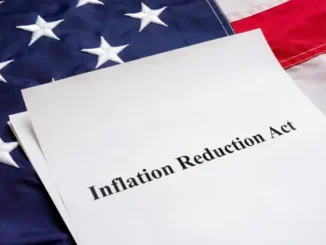
-
Investment Tax Credit (ITC): The IRA offers a base ITC of 30% for qualifying offshore wind projects, with potential bonuses (e.g., 10% for domestic content or energy community siting), potentially reaching up to 50% of qualifying project costs. For Empire Wind, a financial analysis assumes a 40% ITC, credited over four years, based on meeting prevailing wage and apprenticeship requirements and other conditions stipulated in the agreement with New York State.
-
Project Costs: While exact capital costs for Empire Wind 1 are not publicly detailed in the provided references, offshore wind projects typically have high upfront costs, often ranging from $3,000 to $5,000 per kW. For an 810 MW project, this suggests a rough capital cost of $2.4 billion to $4 billion. Applying a 40% ITC to this range, the tax credit could amount to approximately $960 million to $1.6 billion in foregone federal tax revenue, effectively the “cost” to taxpayers through the IRA.
-
Financial Analysis: A financial model cited in a 2024 analysis assumes the ITC reduces the net cost to Equinor, making the project highly profitable with a net present value of $1.4 billion after tax. This profitability is driven by the ITC, a high offtake price ($155/MWh), and conservative financing assumptions (75:25 debt-equity ratio, 5% debt cost, 8% equity cost). The ITC is a critical factor in the project’s economic viability.
-
Other Considerations:
-
Domestic Content Bonus: To qualify for the additional 10% ITC bonus, the project must use 100% U.S.-made iron and steel for non-manufactured components and meet a threshold for U.S.-manufactured components. It’s unclear if Empire Wind fully meets these criteria, which could affect the total credit amount.
-
Market and Inflation Impacts: Rising inflation and supply chain constraints have increased offshore wind costs, potentially making the ITC even more valuable to developers but also raising the taxpayer cost if project expenses are higher than estimated.
-
Cancellation of Empire Wind 2: The second phase (1,280 MW) was canceled in 2024 due to high costs and technical challenges, limiting the taxpayer exposure to only Empire Wind 1.
-
Leslie Beyer, Donald Trump’s nominee for a top Interior Department position, has agreed that the recent order to stop work on Equinor’s Empire Wind project sent “a dangerous message” to developers.
Beyer, nominated as assistant secretary of the interior, lands and minerals management, was asked by senator Angus King during a confirmation hearing about the administration putting a stop to Equinor’s fully-permitted 810MW offshore wind project.
The senator claimed that the administration’s decision would have a “chilling effect” on developers and was an “extraordinary action”. He then asked if Beyer, a seasoned oil and gas industry professional, agreed that “a step that withdraws an already-issued permit” was “a dangerous message to the development community generally”.
She did emphasise that the US needs all forms of energy that it “can get its hands on” and that there was “a premium to secure affordable and reliable energy that is not weather dependent.”
But added that she also agreed with senator King that companies need certainty in the permitting system so they can make financial investment decisions, and that the order to stop the Empire Wind project was a negative signal.
A few days ago Equinor chief executive Anders Opedal said in a quarterly earnings statement that the company would be seeking to engage directly with the US administration to clarify the matter regarding the $2.5bn offshore wind project, as well as consider its legal options.
“We have invested in Empire Wind after obtaining all necessary approvals, and the order to halt work now is unprecedented and in our view unlawful,” Opedal said.
We give you energy news and help invest in energy projects too, click here to learn more






